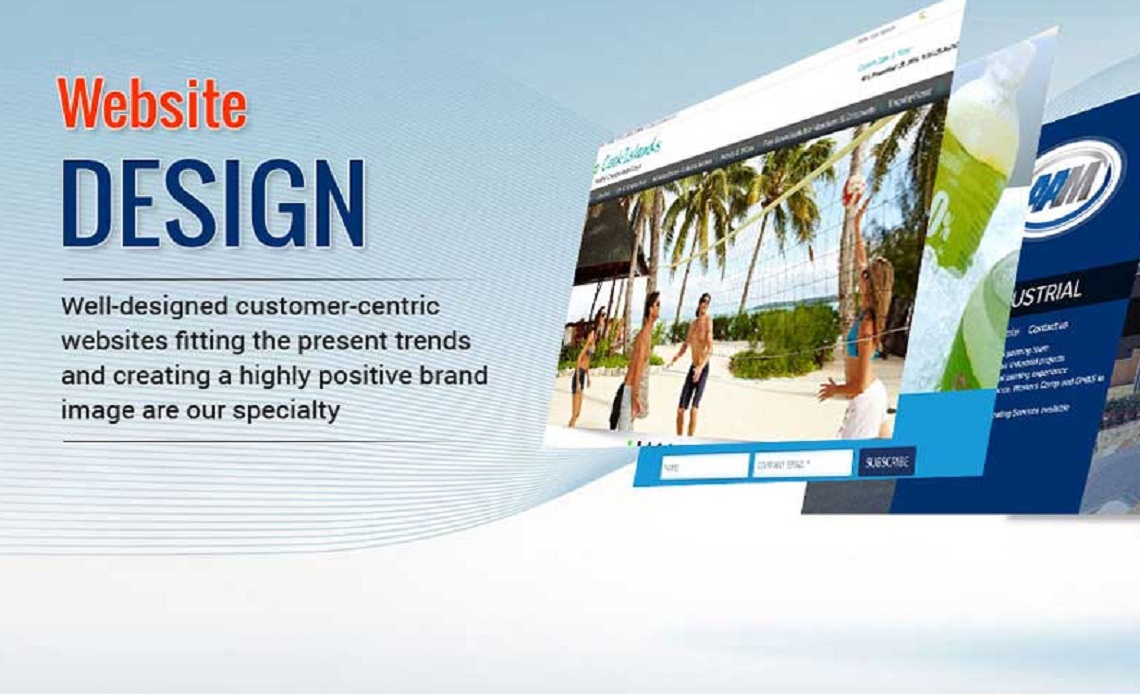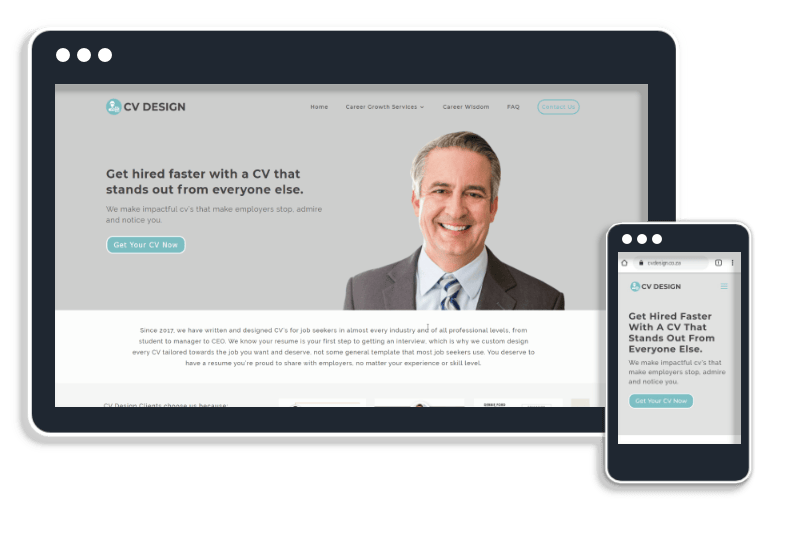Necessary Features to Look for in Web Design Pretoria Solutions
Necessary Features to Look for in Web Design Pretoria Solutions
Blog Article
A Comprehensive Guide to Responsive Website Design Strategies
Responsive website design has actually come to be an essential element in the development of digital platforms, enabling a seamless individual experience throughout a wide variety of gadgets. This guide will certainly explore crucial techniques such as liquid designs, media queries, and picture optimization that add to reliable receptive design. By recognizing these principles, developers can create web sites that not only adapt visually but likewise improve individual interaction. The landscape of internet design is constantly progressing, raising inquiries about the future of responsiveness and the approaches that will certainly specify it.
Understanding Responsive Website Design
Responsive internet style (RWD) is a method that makes certain an internet site's format and content adjust perfectly across a range of gadgets and screen sizes (Web Design Pretoria). This design technique is crucial in today's electronic landscape, where customers accessibility sites from smart devices, tablets, laptops, and computer. RWD improves customer experience by allowing a web site to keep functionality and aesthetic appeals, no matter the gadget being made use of
A crucial element of RWD entails liquid grids that utilize family member systems, such as percents, instead than repaired devices, to define format aspects. This flexibility makes it possible for photos, message, and various other parts to resize proportionally, providing an optimum viewing experience. In addition, media queries are used to apply different styles based upon gadget characteristics like display size and positioning. This strategy ensures that the website's layout is customized to the details demands of individuals, improving usability.
Furthermore, RWD adds positively to seo (SEO) by advertising a solitary, regular URL for a web site, which streamlines link sharing and indexing. As mobile phone usage remains to climb, understanding and applying receptive web design is vital for organizations aiming to reach a wider target market and improve overall web performance.
Trick Concepts of Responsive Design
To create a reliable responsive style, several key principles need to be considered. This suggests designing for the tiniest displays initially and considerably improving the layout for bigger gadgets.
2nd, versatile grids and layouts are important. Making use of a grid system that adapts to different screen sizes permits for an unified circulation of web content, making sure readability and functionality across tools. This versatility is matched by the use relative units, such as percentages or ems, instead of fixed pixels.

Finally, prioritizing content hierarchy is necessary. Clear and sensible company of web content improves user experience, leading site visitors via the site flawlessly, no matter of the gadget made use of. Web Design Pretoria. By sticking to these principles, designers can develop internet sites that are not only visually appealing but additionally useful and user-centered across all gadgets
Methods for Liquid Layouts
Fluid designs are crucial for developing flexible web experiences that flawlessly get used to various screen sizes. By making use of percentage-based sizes as opposed to fixed pixel values, developers can make certain that elements on a website resize proportionally, preserving aesthetic consistency across tools. This strategy advertises adaptability, allowing material to move and adapt as the viewport modifications.
One reliable method for accomplishing liquid formats is to utilize CSS Flexbox or Grid systems. These CSS modules allow developers to create receptive frameworks that can quickly rearrange and resize based upon the offered area. Flexbox stands out in one-dimensional formats, while Grid is ideal for two-dimensional setups, giving greater control over positioning and alignment.
Another strategy involves making websites use of media questions to specify breakpoints where adjustments are required - Web Design Pretoria. By specifying various styles for numerous screen dimensions, developers can modify format residential or commercial properties dynamically, making sure optimum usability and aesthetic charm
Furthermore, integrating loved one systems like ems or rapid eye movements for font dimensions and spacing can even more improve fluidness, as these units range based on customer settings or parent elements. Together, these methods assist in the development of liquid designs that promote an appealing user experience across varied gadgets.
Enhancing Pictures for All Instruments
Pictures play an important role in website design, and enhancing them for various gadgets is important for enhancing performance and you can find out more individual experience. To attain this, developers ought to employ receptive photo methods that make certain photos present correctly throughout various screen sizes and resolutions.
One reliable approach is making use of the HTML" element, which permits specifying several photo resources based on the display problems. By using 'srcset' qualities, programmers can give different picture resolutions, allowing the internet browser to select one of the most appropriate one for the individual's tool.
Furthermore, applying appropriate file styles is important. Layouts such as JPEG, PNG, and WebP each serve unique functions and can significantly affect filling times. WebP, for circumstances, provides exceptional compression, causing smaller sized documents sizes without giving up top quality.
An additional vital facet is image compression. Devices like TinyPNG or ImageOptim can minimize file dimensions, boosting packing speed while protecting aesthetic honesty. In addition, making use of CSS for background images can enhance loading as they can be manipulated much more fluidly across devices.
Ultimately, maximizing pictures not just improves internet site performance but additionally adds to far better individual interaction and retention, making it a basic method in receptive web style.
Keeping and evaluating Responsiveness
Ensuring a smooth user experience across numerous gadgets calls for persistent testing and maintenance of responsiveness. The primary step in this process is to use a mix of manual and automated screening devices. Devices such as Google's Mobile-Friendly Test and BrowserStack enable programmers to sneak peek how their websites do across multiple devices and display dimensions properly.
Furthermore, it is necessary to execute routine audits of your website's design and performance. This consists of monitoring for breakpoints, ensuring components resize correctly, and verifying that navigating continues to be intuitive. Screening should not be restricted to aesthetic facets; capability throughout different web browsers and tools must be checked out to recognize any discrepancies.

Verdict
To conclude, the go execution of receptive website design techniques is essential for developing adaptable websites that boost customer experience throughout varied gadgets. By adhering to key principles such as liquid grids, media inquiries, and flexible layouts, along with maximizing pictures and using responsive structures, developers can accomplish visual appeal and improved loading rates. Recurring screening and maintenance further make sure that internet sites remain practical and cosmetically pleasing, eventually contributing to raised customer interaction and satisfaction.
Receptive web layout has come to be a necessary component in the development of digital platforms, enabling for a seamless individual experience across a wide range of tools.Receptive web layout (RWD) is a strategy that ensures an internet site's design and web content adjust seamlessly across a variety of devices and screen sizes. RWD boosts customer experience by enabling a website to keep capability and looks, regardless of the device being utilized.
Ensuring a smooth user experience throughout different devices requires thorough screening and upkeep of responsiveness.In final thought, the application of receptive internet design methods is vital for developing adaptable web sites that boost user experience across varied devices.
Report this page